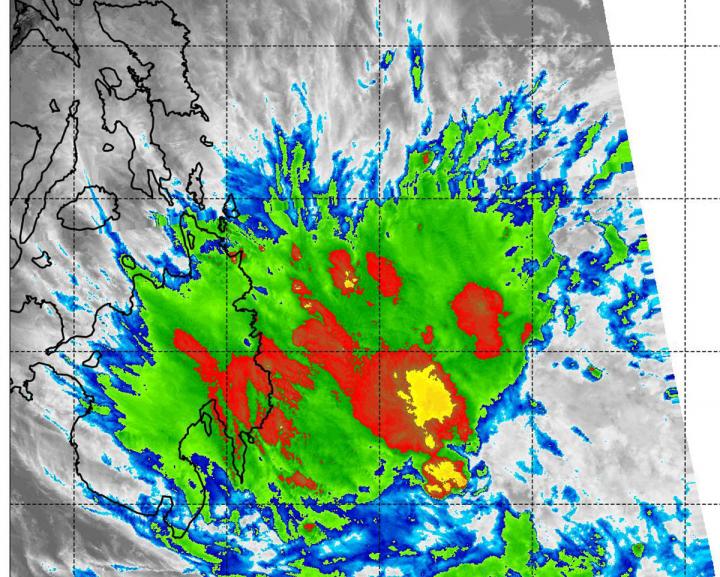
Credit: NASA/NRL
Tropical Depression 03W has dissipated in the Northwestern Pacific Ocean, but not without one last show of strength on infrared satellite imagery.
NASA-NOAA’s Suomi NPP satellite provided an infrared look at Tropical Depression 03W that revealed a burst of strong storms pushing high into the troposphere. 03W’s circulation center was also displaced from the bulk of clouds and precipitation. That’s an indication that vertical wind shear is affecting the storm.
What is Vertical Wind Shear?
In general, wind shear is a measure of how the speed and direction of winds change with altitude. In order to understand how it affects a tropical cyclone or hurricane, think of a tropical cyclone as a series of vertically stacked tires, all rotating. As you go up from the ground, each tire represents the rotation of the storm’s center at a higher level in the atmosphere. The different levels of rotating winds in the center of tropical cyclones need to be stacked on top each other to strengthen. If there are winds higher up that push some of the tires askew near the top, it affects the balance and rotation of the tires below. That’s what happens when vertical wind shear pushes against a storm. It pushes the center and weakens (or wobbles) the rotation of all of the tires.
The Satellite Data Reveal
On March 18 at 1:30 a.m. EDT (0530 UTC), the Visible Infrared Imaging Radiometer Suite (VIIRS) instrument aboard NASA-NOAA’s Suomi NPP satellite analyzed Tropical Storm Depression 03W off-center were as cold as or colder than minus 80 degrees Fahrenheit (minus 62.2 degrees Celsius). NASA research has found that cloud top temperatures as cold as or colder than the 70F/56.6C threshold have the capability to generate heavy rainfall.
The final warning for 03W was issued by the Joint Typhoon Warning Center or JTWC on March 18 at 0900 UTC (5 a.m. EDT). At that time, Tropical depression 03W, also known in the Philippines as Chedeng, was located near 6.6 degrees north latitude and 128.5 degrees east longitude. That’s about 170 nautical miles east of Davao, Philippines. Maximum sustained winds were down to 20 knots (23 mph/37 kph) in the remnant low pressure area.
The remnant low pressure area was moving to the west and are expected to move toward Mindanao, Philippines.
###
By Rob Gutro
NASA’s Goddard Space Flight Center
Media Contact
Rob Gutro
[email protected]
Original Source
https:/



